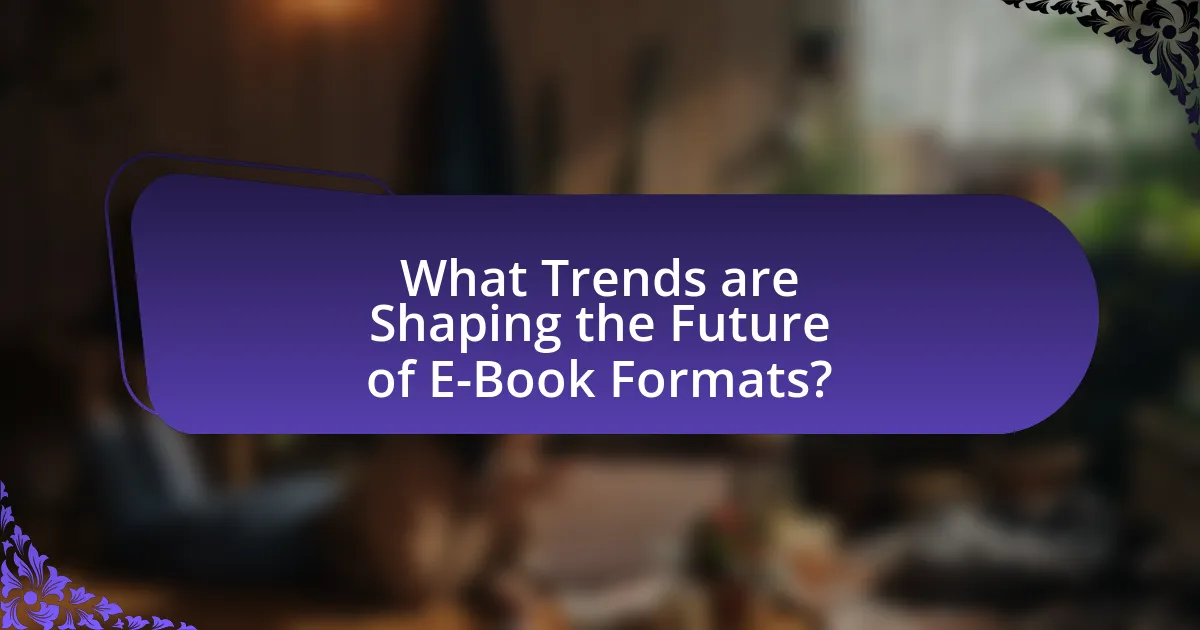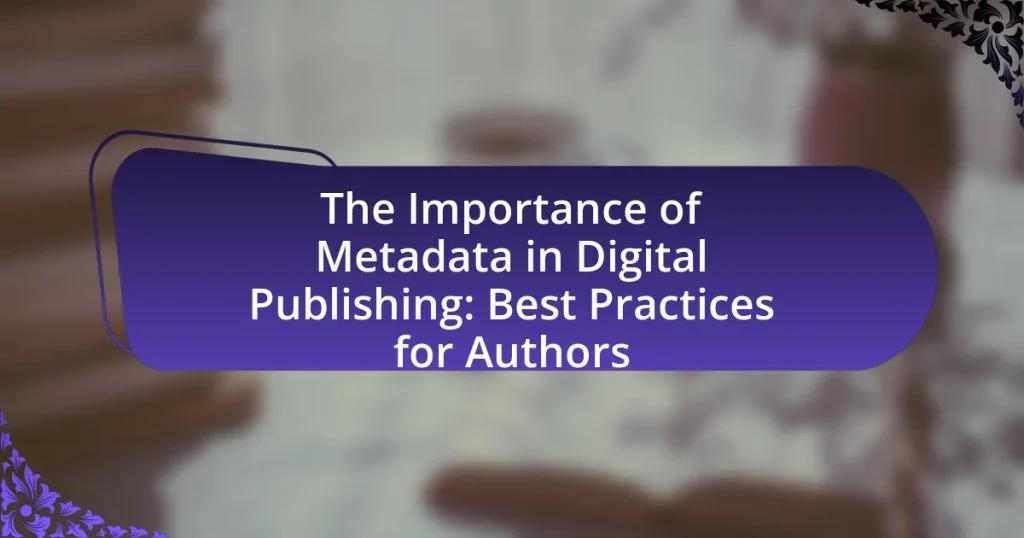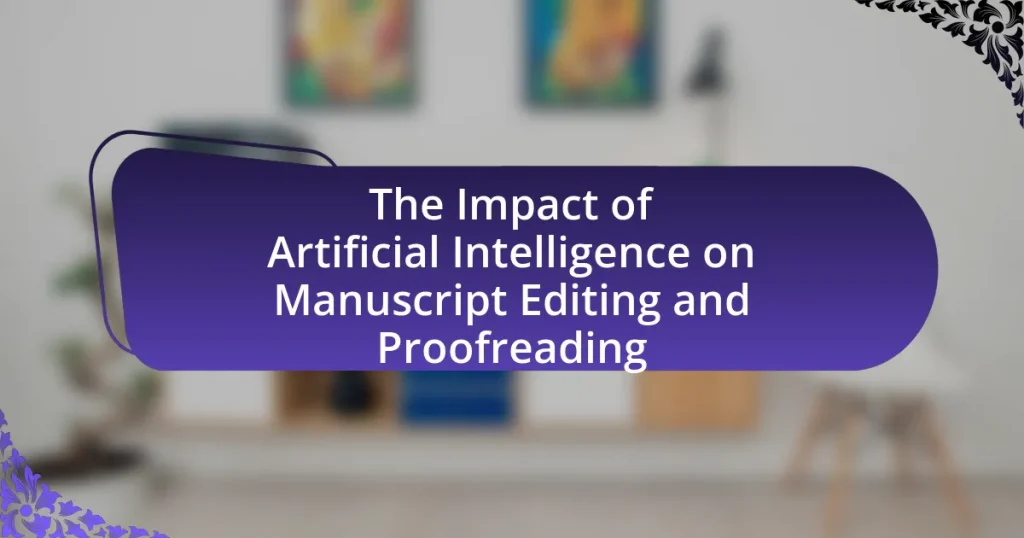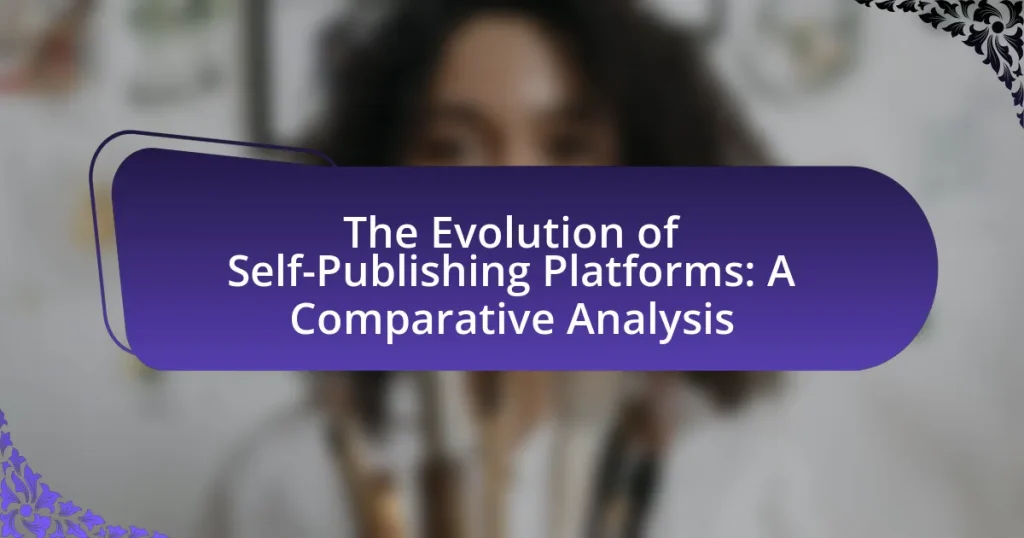The article focuses on the evolution and significance of e-book formats, highlighting key formats such as EPUB, MOBI, and PDF. It traces the development of these formats from their inception in the 1970s to the present day, emphasizing technological advancements that have enhanced user experience and interactivity. The discussion includes the impact of e-book formats on reading habits, the publishing industry, and future trends, such as multimedia integration and subscription models. Additionally, it addresses challenges related to compatibility, digital rights management, and the influence of demographic shifts on e-book adoption.

What are E-Book Formats and Their Evolution?
E-book formats are digital file types designed for the distribution and reading of electronic books, with the most common formats being EPUB, MOBI, and PDF. The evolution of e-book formats began in the 1970s with the introduction of the first e-book, “The Declaration of Independence,” in plain text format, which laid the groundwork for future developments. In the 1990s, the EPUB format emerged, allowing for reflowable content and better compatibility across devices, while MOBI, developed for Amazon’s Kindle, became popular for its proprietary features and DRM capabilities. The rise of smartphones and tablets in the 2000s further accelerated the adoption of e-books, leading to the development of formats that support multimedia elements and interactive features. As of 2023, the trend continues towards more versatile formats that enhance user experience, such as fixed-layout EPUB for illustrated books and enhanced PDF for academic texts, reflecting the ongoing evolution of technology and reader preferences.
How have E-Book formats changed over the years?
E-book formats have evolved significantly over the years, transitioning from simple text files to complex, interactive formats. Initially, e-books were primarily available in plain text or PDF formats, which lacked features like reflowable text and multimedia integration. The introduction of formats such as EPUB in 2007 allowed for better adaptability across devices, enabling features like adjustable font sizes and embedded images. Additionally, advancements in technology have led to the development of formats that support interactivity and enhanced user experience, such as Kindle’s proprietary format, which includes features like Whispersync and X-Ray. These changes reflect the industry’s response to user demands for more versatile and engaging reading experiences, as evidenced by the increasing popularity of e-books, which accounted for over 20% of book sales in the U.S. by 2021.
What were the earliest E-Book formats and their characteristics?
The earliest e-book formats included ASCII text, PDF, and the Open eBook (OEB) format. ASCII text, developed in the 1960s, was a simple character encoding standard that allowed for basic text representation without formatting. PDF, introduced by Adobe in 1993, preserved document formatting across different devices but was not originally designed for e-readers. The Open eBook format, established in the late 1990s, aimed to create a standard for e-books that supported reflowable text and metadata, enhancing accessibility and usability. These formats laid the groundwork for the evolution of digital reading by addressing different needs in text representation and document integrity.
How did technological advancements influence E-Book formats?
Technological advancements significantly influenced E-Book formats by enabling the development of diverse reading devices and enhancing user experience. The introduction of e-readers like Amazon’s Kindle in 2007 revolutionized how digital books are consumed, allowing for features such as adjustable font sizes, built-in dictionaries, and note-taking capabilities. Additionally, advancements in file formats, such as EPUB and MOBI, improved compatibility across various devices and platforms, facilitating easier access to a wider range of content. The rise of cloud storage and internet connectivity further allowed for seamless syncing of reading progress and access to vast libraries, exemplified by services like Kindle Unlimited. These innovations collectively transformed E-Book formats into more interactive and user-friendly mediums, catering to the evolving preferences of readers.
What are the current popular E-Book formats?
The current popular e-book formats are EPUB, MOBI, and PDF. EPUB is widely used due to its reflowable content, making it adaptable to various screen sizes, and is supported by most e-readers except Amazon Kindle. MOBI, primarily associated with Amazon Kindle, allows for features like annotations and bookmarks, making it popular among Kindle users. PDF remains prevalent for its fixed layout, ideal for documents that require precise formatting, such as academic papers and manuals. These formats dominate the e-book landscape, reflecting user preferences and device compatibility.
What are the key features of EPUB and MOBI formats?
EPUB and MOBI formats are both widely used eBook formats, each with distinct features. EPUB, developed by the International Digital Publishing Forum, supports reflowable content, allowing text to adapt to various screen sizes, and includes features like embedded fonts, multimedia support, and interactivity. In contrast, MOBI, originally created by Mobipocket and later acquired by Amazon, is primarily designed for Kindle devices and supports DRM (Digital Rights Management), making it suitable for protecting copyrighted material. MOBI files also allow for a more straightforward reading experience on Kindle devices, with features like text-to-speech and adjustable font sizes. The differences in their design and functionality cater to varying user preferences and device compatibility, highlighting the evolution of eBook formats in the digital publishing landscape.
How do PDF and AZW formats differ from other E-Book formats?
PDF and AZW formats differ from other e-book formats primarily in their structure and intended use. PDF (Portable Document Format) is designed for fixed-layout documents, preserving the original formatting across devices, making it suitable for documents that require precise layout, such as manuals and academic papers. In contrast, AZW (Amazon’s proprietary format) is optimized for e-readers like Kindle, supporting features such as reflowable text, annotations, and DRM (Digital Rights Management), which restricts sharing and copying.
Other e-book formats, such as EPUB, are more flexible than PDF, allowing for dynamic content that adjusts to different screen sizes, enhancing readability on various devices. EPUB also supports multimedia elements and interactivity, which PDF does not. Unlike AZW, formats like MOBI and EPUB are often open standards, allowing broader compatibility across different e-readers and platforms. Thus, the key differences lie in layout preservation, compatibility, and features tailored to specific reading experiences.
Why is the rise of E-Book formats significant?
The rise of E-Book formats is significant because it has transformed the way people access, consume, and interact with literature. E-Books provide instant access to a vast library of titles, allowing readers to purchase and download books in seconds, which has increased reading accessibility globally. According to a report by the Association of American Publishers, E-Book sales accounted for 20% of the overall book market in 2020, highlighting their growing importance in the publishing industry. Additionally, E-Books often come with features such as adjustable font sizes, built-in dictionaries, and multimedia elements, enhancing the reading experience and catering to diverse reader preferences. This shift towards digital formats reflects broader trends in technology and consumer behavior, indicating a significant evolution in the publishing landscape.
What impact do E-Book formats have on reading habits?
E-Book formats significantly influence reading habits by increasing accessibility and convenience for readers. The digital nature of e-books allows users to carry multiple titles on a single device, leading to higher reading frequency and engagement. A study by the Pew Research Center found that 28% of Americans read e-books in 2019, indicating a shift in preference towards digital formats. Furthermore, e-books often include features such as adjustable font sizes and built-in dictionaries, which enhance the reading experience and cater to diverse reader needs. This adaptability contributes to a broader audience engaging with literature, thereby transforming traditional reading habits.
How do E-Book formats affect the publishing industry?
E-Book formats significantly impact the publishing industry by altering distribution methods, pricing strategies, and reader engagement. The introduction of formats like EPUB and MOBI has enabled publishers to reach a global audience instantly, reducing the reliance on traditional print distribution channels. This shift has led to lower production costs and increased accessibility for consumers, as e-books can be sold at competitive prices compared to print editions. According to a report by the Association of American Publishers, e-book sales accounted for approximately 20% of the overall book market in 2020, illustrating their growing importance. Furthermore, e-book formats allow for interactive features, such as hyperlinks and multimedia content, enhancing reader engagement and providing publishers with new avenues for marketing and storytelling.

What Trends are Shaping the Future of E-Book Formats?
The future of e-book formats is being shaped by trends such as enhanced interactivity, multimedia integration, and subscription-based models. Enhanced interactivity allows readers to engage with content through features like quizzes and hyperlinks, making the reading experience more immersive. Multimedia integration incorporates audio, video, and animations, catering to diverse learning styles and preferences. Subscription-based models, exemplified by services like Kindle Unlimited, are gaining popularity as they provide readers access to a vast library of titles for a fixed monthly fee, promoting reading habits and accessibility. These trends reflect the evolving demands of consumers and advancements in technology, indicating a shift towards more dynamic and user-centered e-book experiences.
How is user experience influencing E-Book format development?
User experience is significantly influencing E-Book format development by driving the demand for features that enhance readability, interactivity, and accessibility. As readers increasingly seek personalized and engaging reading experiences, E-Book formats are evolving to include customizable font sizes, background colors, and interactive elements such as multimedia content and hyperlinks. Research from the Pew Research Center indicates that 28% of Americans read E-Books in 2021, highlighting the growing preference for digital reading, which in turn pressures developers to prioritize user-friendly features that cater to diverse reading habits and preferences. This shift towards user-centric design is evident in the adoption of formats like EPUB 3, which supports rich media and responsive layouts, ensuring that E-Books are not only functional but also enjoyable to read across various devices.
What role does interactivity play in modern E-Book formats?
Interactivity enhances modern E-Book formats by engaging readers through features such as multimedia elements, hyperlinks, and interactive quizzes. These features facilitate a more immersive reading experience, allowing users to explore content dynamically rather than passively. For instance, studies show that E-Books with interactive components can improve comprehension and retention rates by up to 30%, as they encourage active participation and critical thinking. This shift towards interactivity reflects broader trends in digital media consumption, where users increasingly expect engaging and personalized content.
How are multimedia elements being integrated into E-Books?
Multimedia elements are integrated into e-books through the incorporation of interactive features such as audio, video, animations, and hyperlinks. These elements enhance the reading experience by providing additional context, engaging the reader, and facilitating a deeper understanding of the content. For instance, educational e-books often include video tutorials and interactive quizzes that allow readers to apply what they have learned. Research indicates that e-books with multimedia features can improve retention rates and engagement levels, making them particularly effective in educational settings.
What technological advancements are driving E-Book format trends?
Technological advancements driving E-Book format trends include improved e-reader technology, enhanced digital rights management (DRM) systems, and the rise of cloud storage solutions. E-readers, such as Amazon Kindle and Kobo, have evolved with better display technology, including E Ink screens that mimic paper and reduce eye strain, thus enhancing user experience. Additionally, advancements in DRM have allowed publishers to protect their content while providing flexible access options, which encourages more widespread adoption of E-Books. Cloud storage solutions enable seamless access to E-Books across multiple devices, facilitating a more integrated reading experience. These advancements collectively contribute to the growing popularity and evolution of E-Book formats in the digital landscape.
How is artificial intelligence impacting E-Book creation and distribution?
Artificial intelligence is significantly transforming E-Book creation and distribution by automating content generation and personalizing reader experiences. AI tools can analyze vast amounts of data to identify trends and preferences, enabling authors and publishers to create tailored content that resonates with specific audiences. For instance, AI-driven platforms like Reedsy and Grammarly assist writers in editing and enhancing their manuscripts, improving overall quality and marketability. Additionally, AI algorithms optimize distribution strategies by predicting which titles will perform well in various markets, thus increasing sales potential. According to a report by MarketsandMarkets, the global AI in the publishing market is expected to grow from $1.2 billion in 2020 to $10.3 billion by 2025, highlighting the increasing reliance on AI technologies in the E-Book sector.
What advancements in digital rights management are emerging?
Emerging advancements in digital rights management (DRM) include the use of blockchain technology, which enhances transparency and security in content distribution. Blockchain allows for immutable records of ownership and usage rights, enabling creators to track their work and receive fair compensation. Additionally, machine learning algorithms are being integrated into DRM systems to better analyze user behavior and adapt protections accordingly, thus improving user experience while safeguarding intellectual property. These advancements are supported by industry trends indicating a shift towards more decentralized and user-centric models in digital content management.
What demographic shifts are influencing E-Book format preferences?
Younger generations, particularly Millennials and Gen Z, are significantly influencing E-Book format preferences due to their comfort with digital technology and mobile devices. These demographics prioritize convenience and accessibility, leading to a preference for E-Books over traditional print formats. According to a 2021 Pew Research Center study, 75% of adults aged 18-29 reported reading an E-Book in the past year, compared to only 30% of those aged 50 and older. Additionally, the rise of smartphones and tablets has made E-Books more accessible, further driving this trend among younger readers.
How do different age groups engage with E-Book formats?
Different age groups engage with E-Book formats in distinct ways, influenced by their technological familiarity and reading preferences. Younger readers, particularly those aged 18-34, tend to embrace E-Books for their convenience and accessibility, often using smartphones and tablets to read. According to a 2021 Pew Research Center study, 37% of adults in this age group reported reading E-Books, highlighting their comfort with digital formats.
In contrast, middle-aged readers, aged 35-54, show a balanced preference for both print and digital formats, with 29% indicating they read E-Books. This demographic often appreciates the portability of E-Books for travel and commuting. Older adults, aged 55 and above, engage with E-Books at a lower rate, with only 17% reporting usage, primarily due to a preference for traditional print books and potential challenges with technology.
Overall, engagement with E-Books varies significantly across age groups, reflecting differing levels of comfort with technology and reading habits.
What cultural factors affect the adoption of E-Books globally?
Cultural factors significantly affect the global adoption of E-Books, including literacy rates, technological familiarity, and reading habits. In regions with high literacy rates, such as North America and Western Europe, E-Book adoption is more prevalent due to a population that is comfortable with technology and digital formats. Conversely, in areas with lower literacy rates, such as parts of Africa and South Asia, traditional print books remain dominant as they align better with local reading practices and educational resources.
Additionally, cultural attitudes towards technology influence E-Book acceptance; for instance, societies that prioritize traditional reading experiences may resist digital formats. A study by the Pew Research Center found that 28% of Americans read E-Books in 2021, reflecting a cultural shift towards digital reading, while in countries like Japan, where manga and print culture are deeply ingrained, E-Book adoption is slower.
Furthermore, socioeconomic factors play a role, as access to devices and the internet can limit E-Book usage in lower-income regions. Overall, these cultural factors create a complex landscape for E-Book adoption, varying significantly across different global contexts.

What are Future Predictions for E-Book Formats?
Future predictions for e-book formats indicate a shift towards enhanced interactivity and multimedia integration. As technology advances, e-books are expected to incorporate features such as augmented reality, audio narration, and interactive graphics, making reading a more immersive experience. According to a report by Research and Markets, the global e-book market is projected to grow significantly, with an estimated CAGR of 4.4% from 2021 to 2026, driven by increasing smartphone and tablet usage. This growth suggests that e-book formats will evolve to meet consumer demands for richer content and personalized reading experiences.
How might E-Book formats evolve in the next decade?
E-Book formats are likely to evolve significantly in the next decade through enhanced interactivity, integration of multimedia elements, and improved accessibility features. As technology advances, e-books will increasingly incorporate features such as embedded videos, audio narration, and interactive graphics, making reading a more immersive experience. For instance, research by the Pew Research Center indicates that 27% of Americans read e-books in 2021, highlighting a growing trend towards digital reading that will likely drive further innovations in format. Additionally, advancements in artificial intelligence may lead to personalized reading experiences, where content adapts to individual preferences and learning styles. This evolution will be supported by the increasing use of devices like tablets and e-readers that can accommodate these richer formats.
What innovations can we expect in E-Book interactivity and design?
Innovations in E-Book interactivity and design will include enhanced multimedia integration, personalized reading experiences, and advanced user engagement features. Enhanced multimedia integration allows for the incorporation of videos, audio, and interactive graphics, making content more engaging and informative. Personalized reading experiences will leverage AI to adapt content based on user preferences and reading habits, improving retention and satisfaction. Advanced user engagement features, such as interactive quizzes and social sharing options, will foster community interaction and deeper learning. These innovations are supported by trends in digital content consumption, where users increasingly seek immersive and tailored experiences.
How will the rise of augmented and virtual reality impact E-Books?
The rise of augmented and virtual reality will significantly enhance the interactivity and engagement of E-Books. By integrating immersive experiences, readers can interact with content in a three-dimensional space, allowing for a deeper understanding of narratives and concepts. For instance, studies indicate that augmented reality can improve comprehension and retention rates by up to 30% when compared to traditional reading methods. This shift towards immersive storytelling will likely lead to a new genre of E-Books that combine text with interactive elements, such as 3D models and animations, thereby transforming the reading experience into a more dynamic and participatory activity.
What challenges could E-Book formats face in the future?
E-Book formats could face challenges related to compatibility, digital rights management, and evolving technology. Compatibility issues may arise as new devices and operating systems are developed, potentially rendering existing e-Book formats obsolete. Digital rights management (DRM) can create barriers for users, limiting access and sharing capabilities, which may lead to consumer dissatisfaction. Additionally, as technology advances, e-Book formats must adapt to incorporate features like enhanced interactivity and multimedia content, which could complicate standardization efforts. These challenges are significant as they directly impact user experience and market adoption.
How might copyright issues affect E-Book format development?
Copyright issues significantly impact E-Book format development by influencing the legal frameworks that govern digital content distribution. These legal constraints can dictate the types of formats that can be used, as publishers must ensure compliance with copyright laws to avoid infringement. For instance, the Digital Millennium Copyright Act (DMCA) in the United States establishes guidelines that protect copyrighted material, which can limit the functionality of E-Book formats, such as restricting copying or sharing features. Additionally, the need for Digital Rights Management (DRM) technologies in E-Books can lead to the creation of proprietary formats that may not be compatible with all devices, thereby affecting user accessibility and market competition.
What are the potential barriers to E-Book adoption in emerging markets?
The potential barriers to E-Book adoption in emerging markets include limited internet access, high costs of devices, and low digital literacy rates. Limited internet access affects the ability to download and access E-Books, as many regions still lack reliable connectivity; for instance, according to the International Telecommunication Union, as of 2021, only 30% of people in low-income countries had internet access. High costs of devices, such as e-readers and tablets, can deter consumers, especially in markets where disposable income is low. Additionally, low digital literacy rates hinder the ability to navigate E-Book platforms and utilize digital reading tools effectively, with UNESCO reporting that many adults in emerging markets lack basic digital skills. These factors collectively impede the growth of E-Book adoption in these regions.
What best practices should authors and publishers consider for E-Book formats?
Authors and publishers should prioritize accessibility, formatting consistency, and metadata optimization when creating E-Book formats. Accessibility ensures that E-Books are usable by individuals with disabilities, which can be achieved by incorporating features like alt text for images and proper heading structures. Formatting consistency across different devices enhances the reading experience, as E-Books should be tested on various platforms to ensure compatibility and readability. Metadata optimization, including accurate keywords and descriptions, improves discoverability in online marketplaces, which is crucial given that 83% of E-Book sales occur through online retailers. These best practices collectively enhance user experience and increase market reach for E-Books.
How can authors optimize their content for various E-Book formats?
Authors can optimize their content for various E-Book formats by ensuring compatibility with different file types, such as EPUB, MOBI, and PDF. This involves using responsive design techniques to create layouts that adapt to various screen sizes and orientations, which enhances readability across devices. Additionally, authors should utilize metadata effectively, including keywords and descriptions, to improve discoverability in E-Book stores. Incorporating interactive elements, such as hyperlinks and multimedia, can also enrich the reader’s experience, making the content more engaging. Research indicates that E-Books with optimized formatting lead to higher reader retention and satisfaction, as evidenced by a study from the International Journal of Information Management, which found that well-structured E-Books significantly improve user engagement.
What strategies can publishers use to stay ahead in E-Book format trends?
Publishers can stay ahead in e-book format trends by adopting a multi-faceted approach that includes embracing new technologies, focusing on user experience, and leveraging data analytics. By integrating features such as interactive content and multimedia elements, publishers can enhance engagement and differentiate their offerings. For instance, the rise of enhanced e-books, which incorporate video and audio, has shown to increase reader retention and satisfaction. Additionally, utilizing data analytics allows publishers to understand reader preferences and tailor content accordingly, leading to more targeted marketing strategies. According to a report by the Association of American Publishers, e-book sales have consistently grown, indicating a strong market demand for innovative formats.



